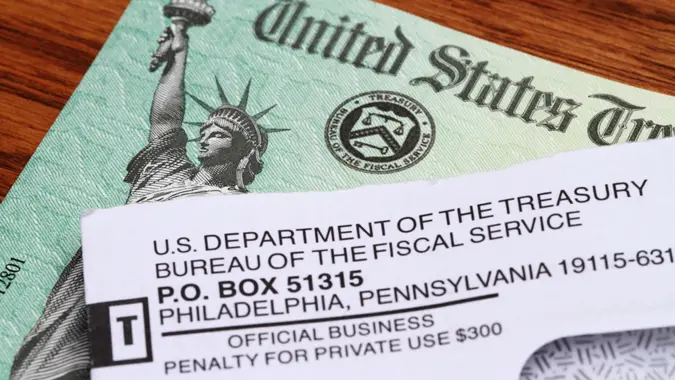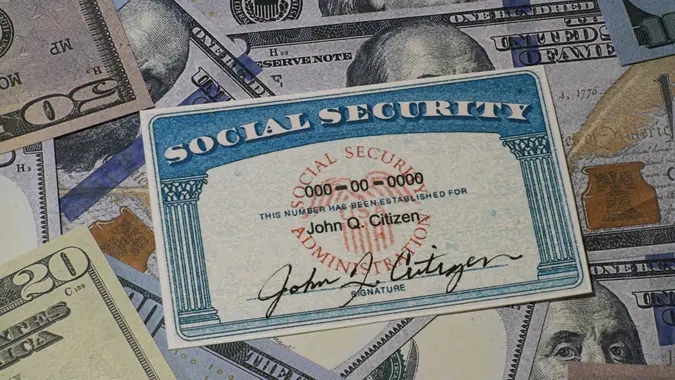Without Preserving Social Security Benefits, Poverty Rates for Older Americans Would Jump Nearly 30%

Commitment to Our Readers
GOBankingRates' editorial team is committed to bringing you unbiased reviews and information. We use data-driven methodologies to evaluate financial products and services - our reviews and ratings are not influenced by advertisers. You can read more about our editorial guidelines and our products and services review methodology.

20 Years
Helping You Live Richer

Reviewed
by Experts

Trusted by
Millions of Readers
For many older Americans, Social Security benefits are a crucial lifeline. According to the Center on Budget and Policy Priorities (CBPP), the Social Security program lifts more people above the poverty line than any other program in the U.S.
Data from the CBPP’s March 2022 Current Population Survey shows that 21.7 million more adults and children would be below the poverty line without Social Security, including one million children and 15.4 million seniors. Reductions in Social Security benefits could significantly increase poverty rates, says the CBPP, especially among older adults.
“It’s the biggest single source of income for American retirees,” said Kathleen Romig, director of Social Security and disability policy at the CBPP, said to CNBC. “Without Social Security, older Americans would have a poverty rate of 38%. In reality, they have a poverty rate of 10%.”
Poverty rates for older adults would meet or exceed 40% in one out of every four states without Social Security, per CBPP data. The program lifts more than one million older adults above the poverty line in California, Florida and Texas, and over half a million in Illinois, Michigan, New York, North Carolina, Ohio and Pennsylvania.
CNBC pointed out that nearly 70 million Americans receive Social Security benefits each month in 2023, adding up to over $1 trillion in benefits paid out. However, there are concerns about the future of the program.
The Social Security Board of Trustees projects that the combined asset reserves of the Social Security trust funds will become deleted by 2034, a year sooner than previously anticipated. At that point, the Board of Trustees estimated that only 80% of benefits would be payable.
Social Security will never run out of money, but the number of people receiving benefits will outpace the number of people paying into the program. This will lead to a reduction in benefits and higher rates of poverty unless lawmakers take action.
 Written by
Written by 

























